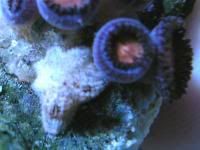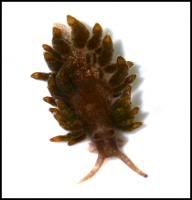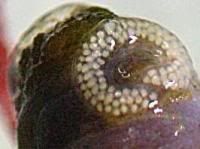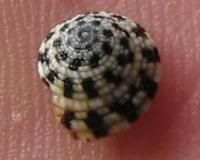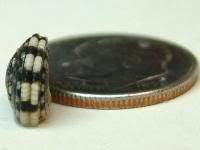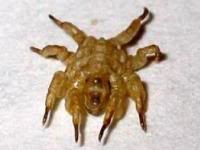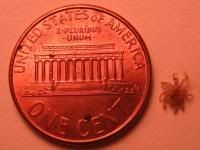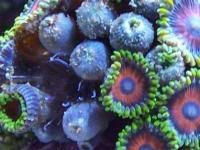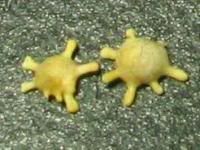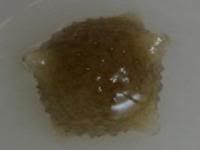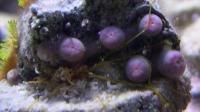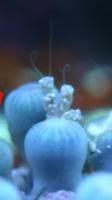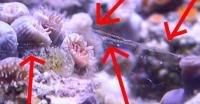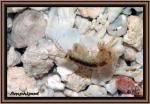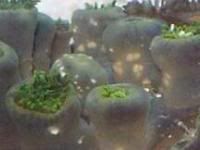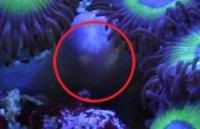-
Folks, if you've recently upgraded or renewed your annual club membership but it's still not active, please reach out to the BOD or a moderator. The PayPal system has a slight bug which it doesn't allow it to activate the account on it's own.
You are using an out of date browser. It may not display this or other websites correctly.
You should upgrade or use an alternative browser.
You should upgrade or use an alternative browser.
Zoo Predators, Irritaters, and Diseases from ZooID
- Thread starter mikem
- Start date
Copied from Charles & Linda Raabe from the Philippines. Link
http://www.chucksaddiction.com/coraldisease.html
Treatments: Note: All treatments should be performed outside of the main aquarium in a quarantine setting.
- Two Potential Molluscicides Against Pest Aeolid Nudibranch - "A molluscicide is a compound that kills molluscs, of which nudibranchs are an unshelled type. Most of the agents I found that are used in terrestrial studies and practice would be toxic to either the aquarium or the coral."
- Metronidazole™ — Is a highly pure, crystalline metronidazole. Use 1 to 2 measures (each about 100 mg) for every 40 L (10 gallons). Repeat every 2 days as required.
- Iodine - (ex. lugols iodine, Tropic Marin pro-coral cure, Seachem reef dip) when used at recommended dosages and times, these medications will kill most if not all adults. Throughout the procedure it is important to stir the coral in an effort to detach any adults from the coral. Once the dip is complete, the coral should be inspected for any nudibranch remnants which can be removed using a toothpick.
- Fragmenting - As a last ditch effort, you can also fragment off healthy, nudibranch free sections of the coral and throw away the effected coral areas.
- Manual Removal - Since most nudibranch are very prey specific, you can also remove the effected coral species from the main aquarium and place into a quarantine tank. Once removed, the coral can then be closely inspected for adult nudibranch and egg masses which can be manualy picked off and removed. The only downside to this method is that it can take a good many months for the nudibranchs that were left behind in the main aquarium to die off from starvation.
- Levamisole - A drug created to treat worm infestations in animals. It acts as a contact poison blocking nerve transmission to kill or stun the parasite. This drug has proven to be a very effective treatment for both parasitic nudibranchs and flatworms. A recommended minimum dosage of 50ppm for a total duration of 10 hours or more is advised. At this dosage the nudibranchs become paralyzed and fall off the coral. Note, Levamisole is only available with a prescription from a licensed Veterinarian.
- Natural predators - Fish such as certain members of the Pseudocheilinus (Sixline wrasses), Coris (Coris wrasses), and certain Thalassoma (Banana wrasses) Genus’ are known to actively feed on these nudibranchs. While this can be an effective control mechanism, it may not completely get rid of all nudibranchs. Most of these wrasses lack the mobility to get to most of the places where the nudibranchs hide. There are many other natural predators, including certain crabs, several other nudibranchs, and perhaps more, however these are not as commonly available to the aquarist as the aforementioned fish.
NOTE: Freshwater dipping is a very dangerous yet very effective treatment option. Freshwater creates a large difference in osmotic pressure between the inside and outside of the body of the nudibranchs. This sudden change in osmotic pressure causes the cells to rupture and quickly kills the nudibranch. The dip must be done with de-chlorinated water adjusted to the pH and temperature of the tank and must last no longer than 15 seconds. Note, this is not recommended as a safe treatment option as it can be very harmful to the zooxanthellae in the coral, longer exposure times can and will kill coral. I would not recommend this method unless all else has failed.
http://www.chucksaddiction.com/coraldisease.html
Treatments: Note: All treatments should be performed outside of the main aquarium in a quarantine setting.
- Two Potential Molluscicides Against Pest Aeolid Nudibranch - "A molluscicide is a compound that kills molluscs, of which nudibranchs are an unshelled type. Most of the agents I found that are used in terrestrial studies and practice would be toxic to either the aquarium or the coral."
- Metronidazole™ — Is a highly pure, crystalline metronidazole. Use 1 to 2 measures (each about 100 mg) for every 40 L (10 gallons). Repeat every 2 days as required.
- Iodine - (ex. lugols iodine, Tropic Marin pro-coral cure, Seachem reef dip) when used at recommended dosages and times, these medications will kill most if not all adults. Throughout the procedure it is important to stir the coral in an effort to detach any adults from the coral. Once the dip is complete, the coral should be inspected for any nudibranch remnants which can be removed using a toothpick.
- Fragmenting - As a last ditch effort, you can also fragment off healthy, nudibranch free sections of the coral and throw away the effected coral areas.
- Manual Removal - Since most nudibranch are very prey specific, you can also remove the effected coral species from the main aquarium and place into a quarantine tank. Once removed, the coral can then be closely inspected for adult nudibranch and egg masses which can be manualy picked off and removed. The only downside to this method is that it can take a good many months for the nudibranchs that were left behind in the main aquarium to die off from starvation.
- Levamisole - A drug created to treat worm infestations in animals. It acts as a contact poison blocking nerve transmission to kill or stun the parasite. This drug has proven to be a very effective treatment for both parasitic nudibranchs and flatworms. A recommended minimum dosage of 50ppm for a total duration of 10 hours or more is advised. At this dosage the nudibranchs become paralyzed and fall off the coral. Note, Levamisole is only available with a prescription from a licensed Veterinarian.
- Natural predators - Fish such as certain members of the Pseudocheilinus (Sixline wrasses), Coris (Coris wrasses), and certain Thalassoma (Banana wrasses) Genus’ are known to actively feed on these nudibranchs. While this can be an effective control mechanism, it may not completely get rid of all nudibranchs. Most of these wrasses lack the mobility to get to most of the places where the nudibranchs hide. There are many other natural predators, including certain crabs, several other nudibranchs, and perhaps more, however these are not as commonly available to the aquarist as the aforementioned fish.
NOTE: Freshwater dipping is a very dangerous yet very effective treatment option. Freshwater creates a large difference in osmotic pressure between the inside and outside of the body of the nudibranchs. This sudden change in osmotic pressure causes the cells to rupture and quickly kills the nudibranch. The dip must be done with de-chlorinated water adjusted to the pH and temperature of the tank and must last no longer than 15 seconds. Note, this is not recommended as a safe treatment option as it can be very harmful to the zooxanthellae in the coral, longer exposure times can and will kill coral. I would not recommend this method unless all else has failed.
zooID.. is it on njreefers or a website?
The_Codfather said:zooID.. is it on njreefers or a website?
http://www.zoaid.com/index.php?module=Gallery2
Thank you!mikem said:The_Codfather said:zooID.. is it on njreefers or a website?
http://www.zoaid.com/index.php?module=Gallery2


